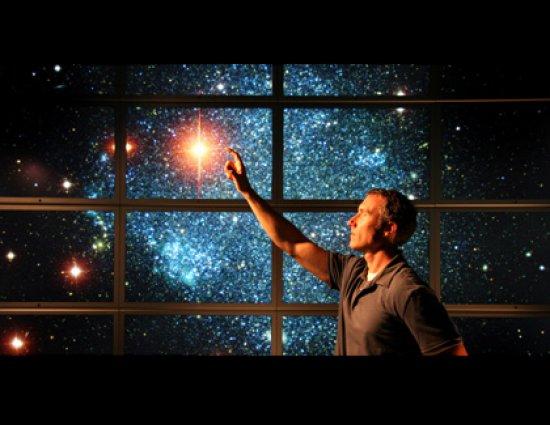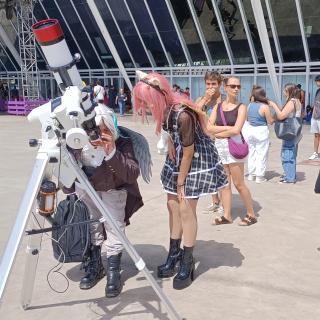The theoretician James Bullock from the University of California
would like to make the surprise discovery of a particle of dark matter in the laboratory. With the aid of computer simulations and observational data from several ground-based and space-borne telescopes, this American researcher studies how dark matter haloes evolve over millions of years. Bullock, an expert in cosmology and particle physics,
centres his investigations on understanding how galaxies, including the Milky Way and the Local Group of which it is a member, were formed in the primordial Universe.
- You have recently participated in research that reveals the minimum mass for dwarf galaxies in the Milky Way. Could you explain the importance of this study?
Our results may suggest that there is a mass threshold, below which galaxies simply do not form. We believe that the presence of dark matter around galaxies is essential to their ability to accumulate matter and form stars. The more dark matter there is, the easier it is for galaxies to collect matter and begin to shine. It may very well be that we've discovered a limiting mass, below which galaxies simply cannot collect enough matter to form stars and start to shine. In this interpretation, there would be a large number of lower mass dark matter clumps out there around the Milky Way, but they are smaller than this mass limit and therefore contain to stars to help us discover them.
Another possibility is that there simply are no dark matter clumps smaller than this mass that exist. If so, then it may provide very important evidence about the particle that makes up the dark matter. Specifically, if the dark matter is "cold" then it can form very small clumps, or halos, and these cold dark matter halos can be much much less massive than the 10 million solar masses that we've measured. However, if the dark matter is "warm" then it cannot form into clumps that are smaller than a characteristic mass, and this minimum mass is linked directly to the properties of the particle (like its mass). If we have actually discovered the minimum mass dark matter halo (and not just the minimum mass galaxy) then it provides very important constraints on the type of particle that makes up the dark matter.
- The number of low mass dwarf galaxies detected so far in the outskirts of the Milky Way is 10 to 100 times smaller than theory predicts. Do we face a crisis in the model or a detection problem?
The question of "missing satellites" comes from this association between the dwarf galaxies we see and the clumps of dark matter that we believe surrounds each of them. It turns out that the Cold Dark Matter theory predicts that the Milky Way should, in fact, be surrounded by many small clumps of dark matter, which have masses that are not so different than the ones we measure for the dwarf galaxies. The problem is that the theory predicts thousands of these clumps, while we only see about 20 dwarf galaxies. This has given rise to the idea that there are a bunch of satellites out there that are "missing".
I think that it's most likely a detection problem. The faintest of the dwarfs contains just a few hundred stars, and is about a hundred million times fainter than the Milky Way. That's about the same difference as a firecracker and a lightning bolt (although they both keep shining and don't just go away).
Because these galaxies are so inherently faint, they can only be detected if they are relatively close to our position in the galaxy. This is the crucial point of our study. Imagine that you are on a very long road, at night. If you tried to count cars on the road, you would be limited to the ones that are close enough for their lights to be visible to you. Of course, there are likely many more cars out there, but they are just too distant too be seen. This is especially important if the car lights are rather dim. However, if you knew the spacing between cars on the road, you could infer how many cars there were in total based on the number that you could see.
We recently wrote a paper where we did the same thing -- except that we were counting dwarf galaxies. We showed that there could easily be hundreds of undiscovered satellites out there.
- What are the weak points in the cosmology of Cold Dark Matter? Do you believe in an alternative theory?
There are some issues, but those problems are overwhelmed by successes. Most of the problems (like the fact of the 'missing satellites') can be explained by appealing to astrophysical uncertainties and issues with our ability to measure galaxy properties. Nonetheless, it's important for us to take all the problems seriously, because there is always a chance that nature is trying to tell us something.
- What cosmological question would you most like to see settled?
It would be amazing if the dark matter were actually discovered as a particle in the laboratory. I would like to know just what this stuff is, and how it fits in with our overall theories of particle physics and cosmology.
More information:



